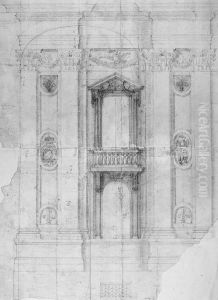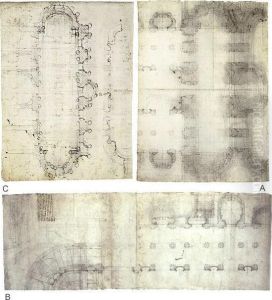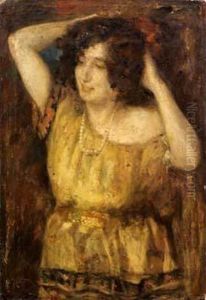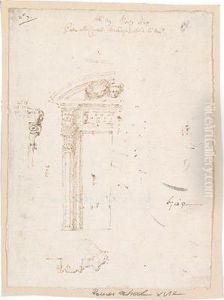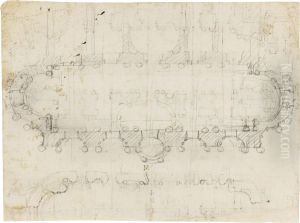Francesco Castelli Borromini Paintings
Francesco Borromini, born Francesco Castelli on September 25, 1599, was a prominent and visionary architect of the Baroque period in Italy. Born in Bissone, a Swiss territory near Lake Lugano, Borromini was the son of a stonemason, which provided him with an early exposure to building and design. His precise birth date is sometimes a matter of historical debate, but most scholars accept the late September date.
As a young man, Borromini moved to Milan where he learned the craft of stonemasonry before going to Rome around 1619. In Rome, he changed his name to Borromini, which was more Italian sounding and possibly to distinguish himself from another famous architect of the time, Carlo Maderno, who was his distant relative and also from the same area of Switzerland. Borromini initially worked as a stonecutter at St. Peter's Basilica, where he met and was greatly influenced by another Baroque architect, Gian Lorenzo Bernini.
While Bernini received the lion's share of attention and commissions in Rome, Borromini developed a more idiosyncratic and innovative architectural language. His first major commission was the church of San Carlo alle Quattro Fontane (also called San Carlino), begun in 1638. Here, Borromini displayed his talent for complex geometrical forms and spatial relationships, utilizing an undulating façade and a concave-convex rhythm that broke away from the traditional rectilinear forms of Renaissance buildings.
Borromini's other significant works include the Oratory of Saint Phillip Neri, the church of Sant’Ivo alla Sapienza with its spectacular spiral lantern, and Sant'Agnese in Agone, which faces Bernini's Fountain of the Four Rivers in Piazza Navona. His architectural style is characterized by its dynamic forms, complex spaces, and inventive use of light and shadow, which were groundbreaking at the time and influential in the development of Baroque architecture.
His innovative ideas, often at odds with those of his contemporaries, and his reputedly difficult personality led to a career fraught with professional rivalries, particularly with Bernini. Despite his immense talent, Borromini often felt undervalued and struggled with depression throughout his life. This struggle with mental health culminated in a tragic end: Borromini committed suicide on August 2, 1667, after a period of intense melancholy and despair.
Borromini's legacy in the realm of architecture is significant. His approach to Baroque architecture was more intellectual and less concerned with surface decoration than his peers. His emphasis on the plasticity of form and the integration of space and structure had a lasting impact on the development of European architecture well beyond his death.
